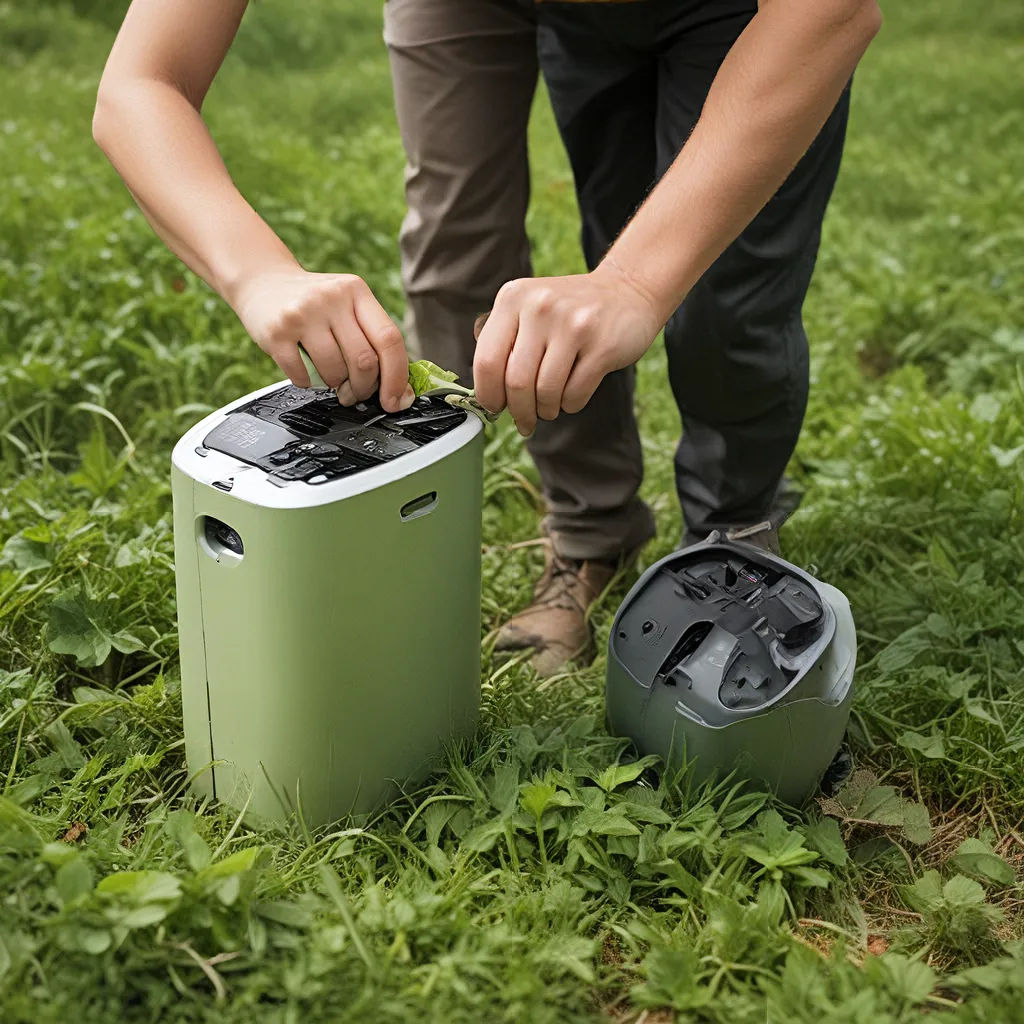
Unplugging from the Grid: The Thrill of Portable Bioenergy
Imagine this: you’re deep in the rugged wilderness, miles away from the nearest outlet. Your phone is dying, your camp lantern is flickering, and the thought of lugging around heavy, power-hungry batteries has you feeling more drained than your devices. But wait – what if I told you there’s a renewable, portable solution that could keep you juiced up and off-the-grid for days on end?
Welcome to the world of portable bioenergy – the latest breakthrough in sustainable, on-the-go power. As someone who loves adventuring in nature, I’ve spent countless hours searching for the perfect way to stay charged up without relying on the traditional electrical grid. And let me tell you, this technology has been an absolute game-changer.
The Portable Bioenergy Advantage
Let’s start with the basics. Portable bioenergy systems use renewable organic materials, like plant matter or food waste, to generate electricity through a process called anaerobic digestion. This process breaks down the biomass and captures the methane gas it produces, which is then used to power a small generator. The result? Clean, consistent power that you can take anywhere.
One of the biggest advantages of portable bioenergy is its sustainability. Unlike fossil fuel-powered generators or disposable batteries, these systems don’t deplete natural resources or contribute to environmental pollution. In fact, they actually help reduce waste by converting things like leftover food scraps or yard trimmings into usable energy.
But the benefits don’t stop there. Portable bioenergy systems are also incredibly versatile. Whether you’re planning a week-long backpacking trip, setting up an off-grid cabin, or just need a reliable backup for power outages at home, these compact units can easily integrate into your lifestyle. They’re lightweight, durable, and can keep your devices charged for days on a single “refill.”
And let’s not forget about the cost savings. Sure, the initial investment in a portable bioenergy system may be a bit higher than a traditional generator. But when you factor in the ongoing fuel costs and environmental impact of fossil fuels, the long-term savings quickly add up. Plus, many local and federal incentives are available to offset the upfront costs, making it easier than ever to make the switch to renewable power.
From the Lab to the Wild: Portable Bioenergy in Action
As someone who’s had the chance to test out a variety of portable bioenergy systems, I can say with firsthand experience that they truly deliver on their promises. Take, for example, my recent backpacking trip in the Alaskan wilderness.
Plugnergy, one of the leading manufacturers of portable bioenergy tech, had sent me their latest model to try out. I was a little skeptical at first – could this small, unassuming unit really power all my gear for a week in the backcountry? But from the moment I fired it up and started feeding it dehydrated food scraps, I was hooked.
The generator hummed away quietly, providing a steady stream of electricity to keep my phone, headlamp, and even a small camp lantern running. And the best part? I never had to worry about running out of fuel. Whenever the biomass chamber got low, I just tossed in some leftover trailmix, apple cores, and other organic waste, and it was good as new.
Overcoming the Challenges of Off-Grid Power
Of course, no technology is perfect, and portable bioenergy systems do come with their own unique set of challenges. One of the biggest hurdles is the need for a constant supply of organic feedstock. If you’re deep in the wilderness with no access to food scraps or plant material, your power source is essentially useless.
That’s why it’s important to plan ahead and make sure you have enough biomass to last your entire trip. Some portable bioenergy units even come with collapsible collection bags or dehydrators to help you stockpile fuel on the go. And for those times when you just can’t find enough organic material, many systems also have the ability to run on a small solar panel or hand crank as a backup.
Another potential issue is the noise and emissions produced by the generator. While modern portable bioenergy systems are much quieter and cleaner-burning than their gas-powered counterparts, they still emit a low hum and produce some exhaust. This can be a concern for those seeking the ultimate in off-grid serenity.
Fortunately, many manufacturers are working to address these challenges through innovative design and engineering. And as the technology continues to evolve, I’m confident that we’ll see even more seamless, eco-friendly power solutions hit the market in the near future.
Powering the Future, One Scrap at a Time
As I sit here, sipping my coffee and typing away on my fully-charged laptop, I can’t help but feel excited about the potential of portable bioenergy. This technology isn’t just a niche solution for outdoor enthusiasts – it has the power to revolutionize the way we think about energy, both on and off the grid.
Imagine a world where every household has a compact bioenergy unit in their backyard, turning food waste into clean, renewable electricity. Or picture a remote village in the developing world powered entirely by portable bioenergy systems, without the need for costly and environmentally-damaging infrastructure.
The possibilities are endless, and I for one can’t wait to see what the future holds. So why not join me in Charging Ahead with Portable Bioenergy? Whether you’re planning your next wilderness adventure or just looking to reduce your carbon footprint at home, this innovative technology could be the missing piece to your sustainable power puzzle.
Plugnergy and other leading portable bioenergy brands are making it easier than ever to unplug from the grid and power your life on the move. So what are you waiting for? It’s time to start turning your trash into treasure – one scrap at a time.